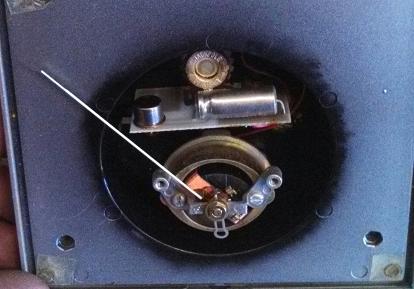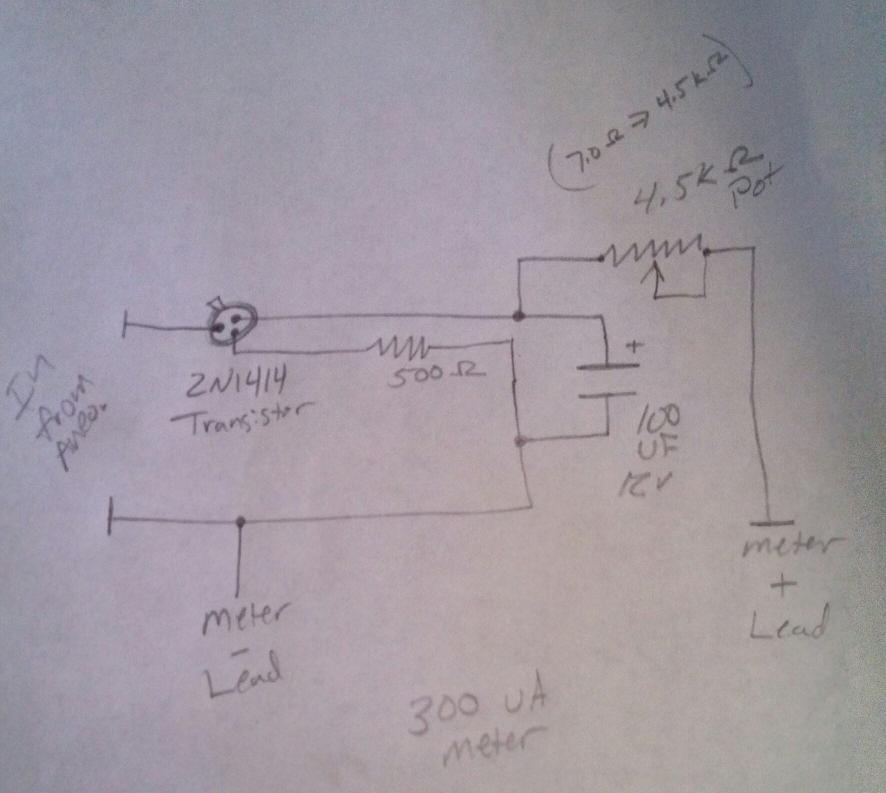Well, curiosity got the cat. Yesterday, I opened up the panel meter that displays windspeed on my Enertech 1500's control box. I was just looking for any clues as to what type of meter they had used but what I found was that there's a small circuit board tucked inside the meter itself. The circuit is rather simple and consists of a transistor, resistor, capacitor and a trim pot.

The circuit board:

I carefully removed the board from the meter and took some notes and drew up a quick schematic. My apologies if the symbols are not 100% accurate, I'm not the greatest with electronics.

In my research online it looks as though the 2N1414 transistor is an obsolete part. Can anyone suggest an alternative? The meter itself had 300 uA FS printed on it, so I'm assuming it would be a 300 uA Full Scale meter. Any other mods to suggest to the circuit? The aneo's that I have are the voltage / frequency type (not externally powered, no reed switches). I believe they are the 40C. The specs I found says that they put out 2 VAC at 60 Hz and 60 Hz equals 45.82 m/s (about 100 mph).
Corey